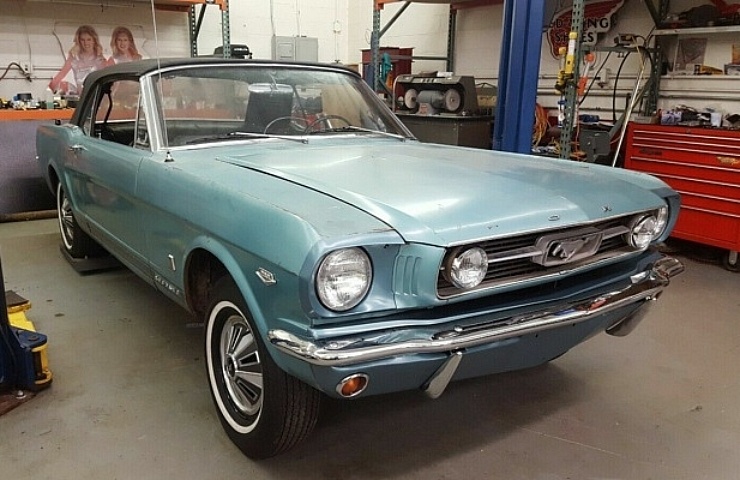The first generation of the Ford Mustang spanned 10 years—from halfway through 1964 to 1973. The engines powering those iconic classic cars evolved over that decade. To make it easier to identify changes in horsepower, torque, and displacement, Ford used a letter-based code system. That explains why you sometimes see a reference to a “K Code” or “S Code” engine on eBay listings for first-gen Mustangs.
What do those letters mean? Which engine codes denote more power under the hood? Which codes increase the value of the car? Here’s what you need to know.
Look for the Engine Code in the 5th Digit of the VIN
Sellers of first-generation Mustangs will often call out the engine code in an eBay listing. But you can identify the original engine of the Mustang yourself by looking at the vehicle identification number (VIN). For example, if the fifth digit is K, it means the car originally came with a high-performance 289 V-8 K engine. You see the K in the fifth spot in this photo?
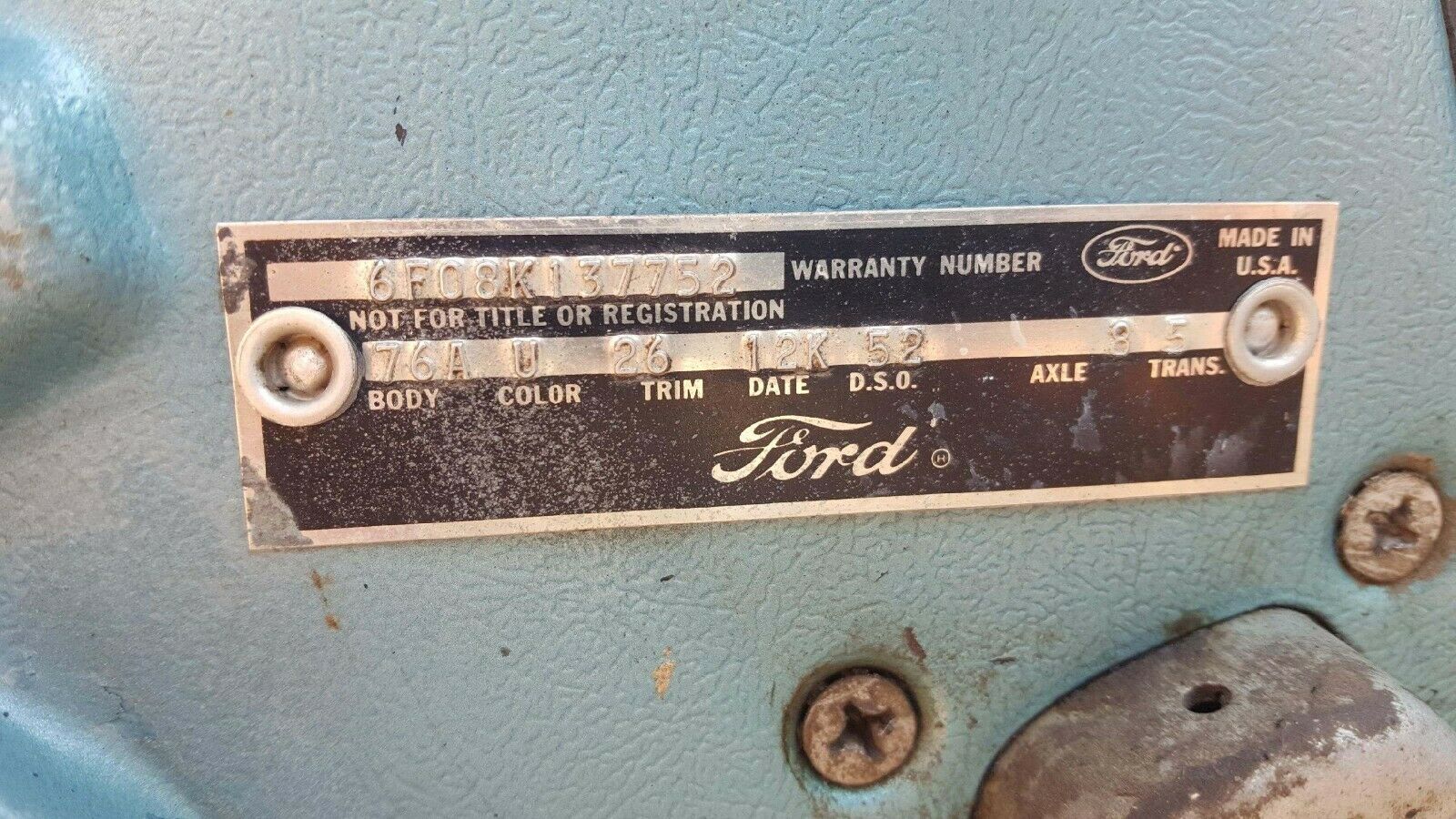
The fifth digit of the ’66 Mustang’s VIN tells you about the engine provided.
The VIN can tell you which engine was on board when the Mustang left the factory. Of course, things can change over the years. So you won’t necessarily know if that same original engine is still under the hood.
In most production years, the Mustang was offered with at least four engine options. The base engine was typically a six-cylinder mill. Other options included a two-barrel carburetor V-8; a four-barrel V-8, and gnarly V-8 as options. The more powerful engines had a higher price tag. Fewer buyers opted for those engines, making them relatively rare.
Glossary of 1st Generation Mustang Engine Codes
Over the 10 years of production, Ford varied the engine options and occasionally re-used the engine code for a different model year. Here is a summary of the engine codes used for the first-generation Mustangs.
A code – This was the upgrade from a basic V-8. The 255-horsepower engine required premium fuel due to the higher compression.
C code – The C engine was the base V-8 Windsor, 200-hp engine for 1965 to 1968. It was the V-8 engine but without the expensive, high-performance upgrades.
D code – The rare 210-horsepower 1964-and-a-half Mustang engines offered the four-barrel V-8 but lacked high-performance internals.
F code – This Windsor V-8 was only used for the same 1964.5 model year. It offered 164 horsepower. From 1968 to 1973, the updated F-code engine replaced the previous 289 V-8. It provided more displacement with 302 cubic inches and an upgrade to 210 ponies.
G code – Offered for the Boss 302, this 290-hp engine blended the best of both the Windsor and Cleveland engines.
H code – This 250-horsepower Cleveland engine replaced the previous Windsor engine. They were both small blocks, but the cast-iron Cleveland is more durable.
J code – A one-year offering of a slightly upgraded V-8 with 230 horsepower.
K code – The K-code engine was the high-performance V-8 for the early years of the Mustang. It’s the priciest option. But it brought 271 horsepower.
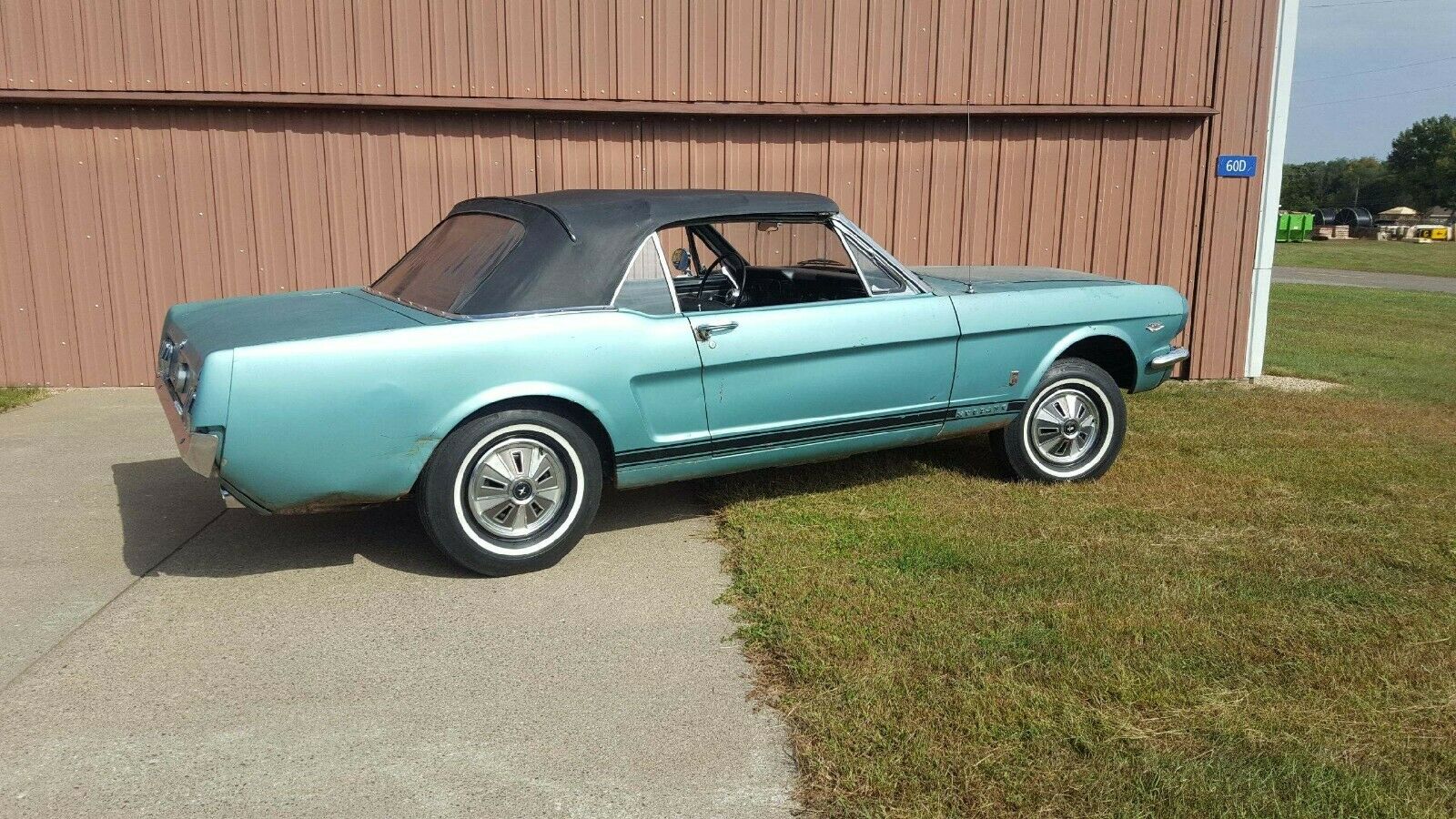
This ’66 Mustang project car rolled out of the factory with a coveted K-Code engine.
L code – A six-cylinder, 155-hp engine was the base offering starting in 1971.
M code – A 351 cubic-inch engine with nearly 300 horsepower used in the Shelby GT350 and the Mach 1.
Q code – From 1969 to 1971, the 335-hp Q engine was a variation of the Cobra Jet 428. However, it was offered without a functional hood scoop. From 1972 to 1973, the Q downgraded to 351 cubic inches. That reduced output to 266 horsepower.
R code – In 1968 and 1969, the R code denoted the use of a 428 Cobra Jet engine designed for drag strips. It was a mean machine providing 335 horsepower. For ’71, the engine used in the Boss 351 reduced power to 266 ponies.
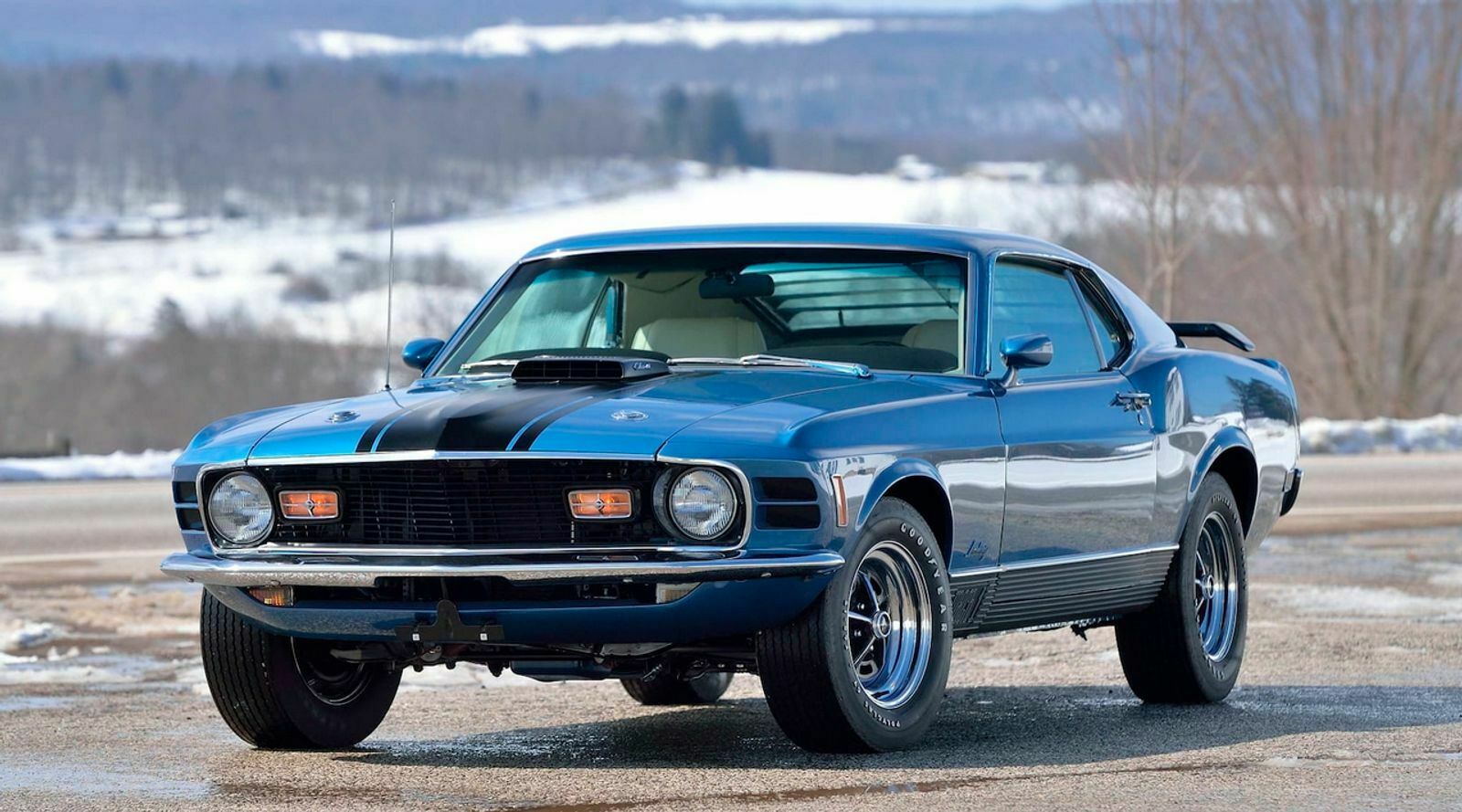
A factory R-Code Mach 1 powered by the Shaker-scooped 428 Cobra Jet big-block
S code – This was the first big-block V-8 offered for the Mustang. At about 320 horsepower, it had even more power than the K-code engines.
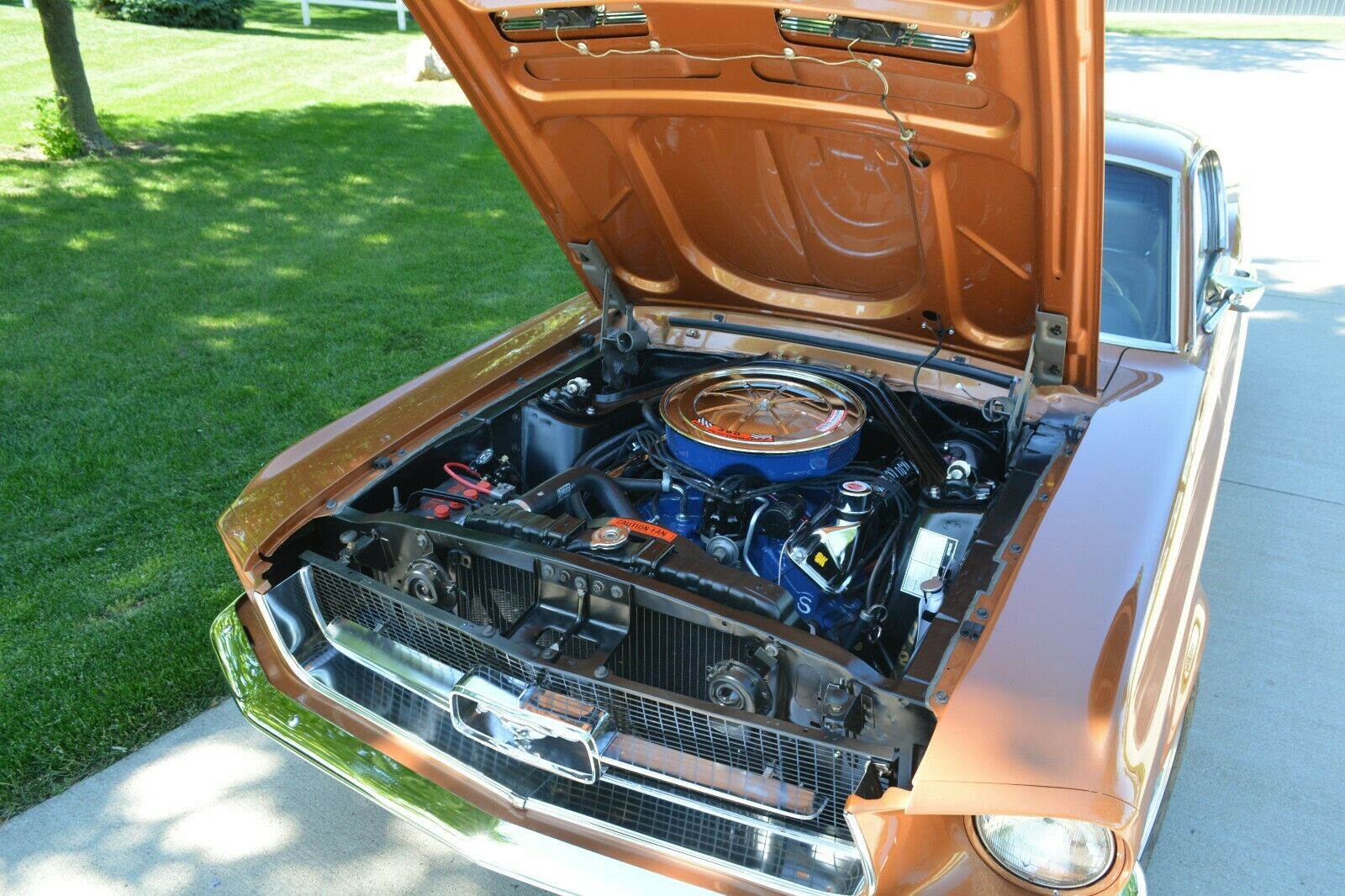
What’s under the hood of this ’67 Stang? The code will tell you.
T code – From 1965 through 1971, there was a base inline six-cylinder engine. The Mustang engines with about 120 horsepower are abundant.
U code – This inline six-cylinder engine was only produced for a few months in the Mustang’s first-year version. Compared to other unique Mustang engines, it was a meek 101-horsepower affair.
X code – The rare X-code 280-horsepower engine was only offered in 1968, making it relatively rare for Mustangs.
Z code – This was another offering for the Boss 429 Mustang with 429 cubic inches of displacement. The 375-hp mill was a racing option for NASCAR and other motorsport groups.
The early Mustang engine codes that get the most attention are K, R, and S. That’s because they are relatively rare high-performance variants. Expect to pay more for those models.
But there’s always a tradeoff of power, price, and other features. The key is knowing what you’re getting. Fortunately, the code embedded in the fifth digit provides the clues you need.

